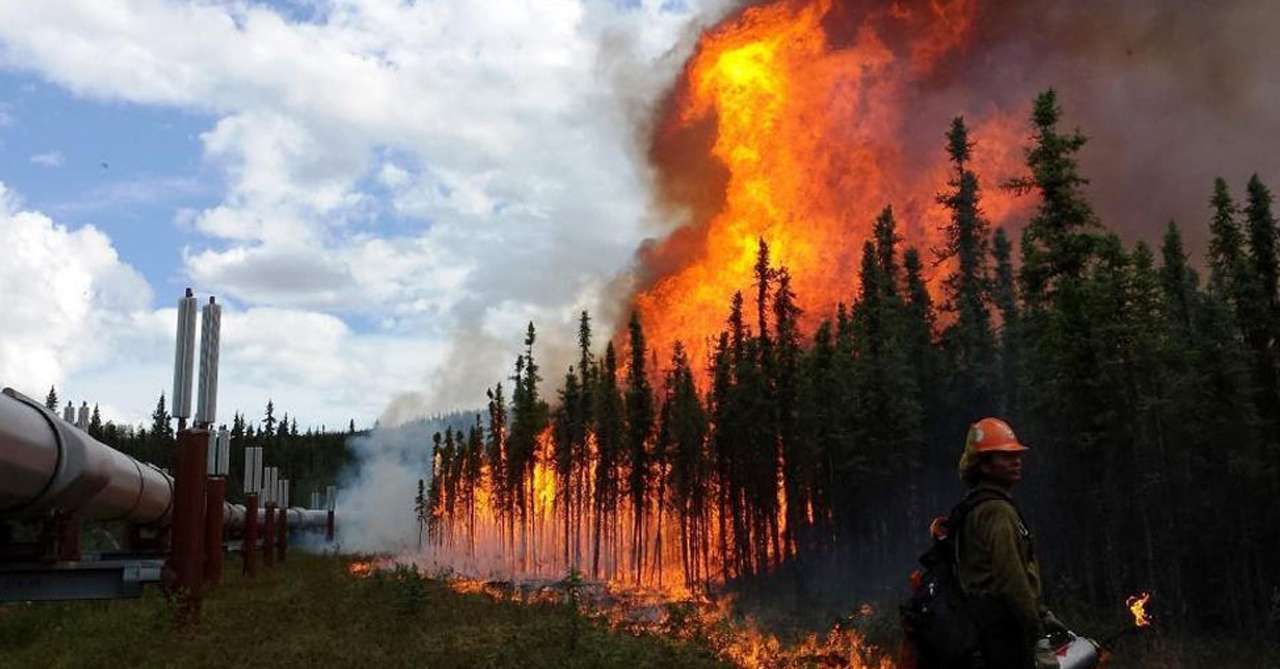
Arctic Fire
The eastern Siberian landscape In winter it is blanketed in snow; in summer, its forests are lush and its wetlands soggy. In 2019, however, the region is on fire, as are large parts of the Arctic Circle.
Nothing on this scale has been observed. The amount of burning seen in boreal regions in recent decades was outside the norm for the past 10,000 years making 2019 year’s events “unprecedented”.
Why Arctic Fires are exceptional and unprecedented?
The fire began in June, spurred by an extremely hot and dry early summer. It was the hottest June on record, globally, according to America’s National Oceanographic and Atmospheric Administration, (NOAA). Temperature increases owing to global warming are not evenly distributed, and the Arctic is warming twice as fast as the rest of the planet. In the regions that are burning, temperatures peak at 8-10° C warmer than the average from 1981 to 2010. This had dried of the landscape, producing tinder from natural forest fires that were probably ignited by lighting.
So far, hundreds of above-ground fires have been recorded by satellites, covering hundreds of thousands of hectares in Arctic and sub-Arctic, from Eastern Siberia to Alaska and Greenland. Fires within the Arctic Circle have produced more than 100m tonnes of carbon dioxide, or roughly what Belgium emits in a year. The burnt vegetation will regrow within a decade, and in doing so reabsorbs much of the released carbon dioxide.
How is this fire damaging and what is the general Impact of Arctic Fires?
The most important impact is on what is happening below ground and that’s what worries ecologist and climate scientists. Frozen Soil, rock and plant material remaining at below 0°C. As permafrost thaws, microbes decompose organic material, releasing carbon dioxide and methane into the atmosphere.
Many of Siberian and Alaskan fires are burning carbon-dense peat soils, which would normally be waterlogged. Peat fires produce much more carbon dioxide and methane from the combustion of carbon that has been locked in the ground for hundreds or thousands of years. Burning soil therefore eliminates important carbon sinks that cannot be replaced on any useful timescale.
Fires in the Arctic become will have even bigger consequences because of its potential of releasing large amounts of stored greenhouse gases.
This in turn sets in motion positive feedback loops which are not accounted for in the climate projection of the Intergovernmental Panel on Climate Change.
One reason so much carbon has been released into the atmosphere is because many of the fires are burning through peatlands. Peat is made of decomposed organic matter and it is a large natural carbon source. Thanks to high temperatures (June 2019 was the hottest June on record), frozen peatlands are drying up and becoming highly flammable. Simple lightning strikes have caused massive peat fires, which tend to burn longer than regular forest fires. Researchers worry that the increase in CO2 from the Arctic fires will warm the atmosphere even more, leading to drier peat soils and consequently more fires. The emissions from last two year’s fires make it more likely that the condition will be made for peat to ignite again in coming summers, producing ever more emissions, and so on.
The fires also produces a fine black soot known as black carbon which, if dropped on the Arctic sea ice by favourable winds, will darken its surface, making it more likely to absorb sunlight melt. This decreases the reflectivity of the region as a whole (blue water absorbs more solar energy than white ice) and further increases Arctic warming. Black carbon can harm humans and other animals by entering the lungs and bloodstream; it also plays a role in global warming.
Dark soot readily absorbs sunlight and warms the atmosphere. It also can fall on top of ice or snow, which darkens the surface, reduces reflectivity, and traps more heat.
The full scales of the Arctic fires’ impact will not be known for months. The satellite data being used to estimate emissions from the wildfires cannot capture fires that are smouldering below the ground, which could double or triple the impact.
As these fires loft thick plumes of smoke into the skies, they also launched megatons of tiny, harmful particles into the air.
How Difficult is it to control Fires?
Fighting fires that have grown to such colossal size in remote regions are difficult or impossible with few roads.
The task is even harder for large peat fires. In South-East Asia, peat fires are caused by local environmental change, including drainage and deforestation to make way for crops.
The Arctic fires are driven by climate change,
You can’t raise the water table for an area the scale of Northern Alaska or Siberia. Few natural peat fires that big have ever been successfully managed, and then only by pumping billions of gallons of water over land. The only way to deal with the spread of this voice is to slow the rate of global warming, by stepping up work on cutting greenhouse-gas emissions.

